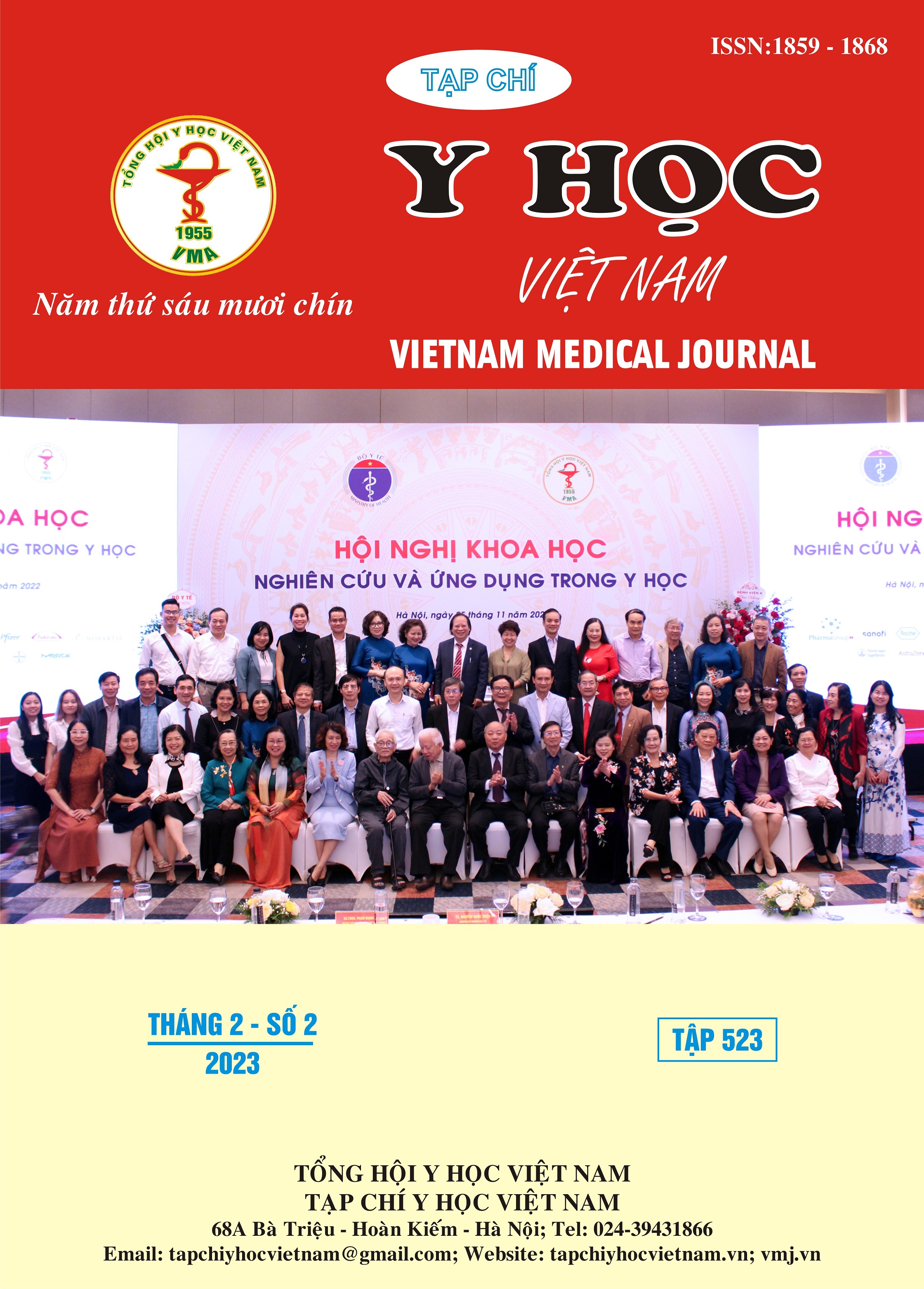EARLY RESULTS OF RADICAL GASTRECTOMY FOR GASTRIC CARCINOMA IN PATIENTS UNDER 40 YEARS OLD IN K HOSPITAL
Main Article Content
Abstract
Objectives: To evaluate the clinicopathologic features and early results of radical gastrectomy in patients < 40 years old with gastric carcinoma in K Hospital. Patients and methods: 54 patients younger than 40 with radical gastrectomy were prospectively reviewed from 6/2018 to 6/2022. Results: Of the 54 patients, the mean age was 34 ± 2,9 (20-39), the gender ratio was 1,07:1; the most common clinical signs were epigastric pain (90,7%), anorexia (55,6%), gastrointestinal bleeding (22%), and pyloric stenosis (11%). Among 54 patients, 11% had a family history of gastric cancer, and 27,8% had chronic gastritis. Tumor location: lower (57,4%), small curvature (25,9%), upper (5,6%), and whole (3,7%). Histological types: poorly differentiated carcinoma (55,5%), signet-ring cell (33,3%), and mucinous adenocarcinoma (5,6%). Stage: T4 (48,2%), T1-T2 (40,7%); 50% of lymph nodes were metastasis, the mean lymph nodes harvested: 15,8±6,3, and of node metastasis was 4,1±6,9; the rate of lymph node metastasis/node harvested: 25,6%, the mean time to first passage of flatus: 3,48±0,75 days; the meantime for beginning oral feeding was 3,98±0,94 days; hospital stay: 10,7±1,4 days; postoperative morbidity rate was 13%, including pneumonia (5,5%), wound infection (5,5%), and duodenal leakage (1,9%); no postoperative mortality. Conclusion: Young patients < 40 years old with gastric adenocarcinoma have a short duration of disease and significantly higher incidence of poorly differentiated tumor histologic findings and both locally advanced and node metastasis at presentation. Radical gastrectomy for gastric adenocarcinoma in younger patients can be performed safely and feasibly with the lowest morbidity.
Article Details
Keywords
gastric cancer, younger patients, radical surgery.
References
2. C.P. Theuer , C. de Virgilio, G. Keese et al (1996). Gastric adenocarcinoma in patients 40 years of age or younger. Am J Surg.172(5):473-7.
3. R. Santoro, F. Carboni, P. Lepiane et al (2007). Clinicopathological features and prognosis of gastric cancer in young European adults. Br J Surg;94(6):737-42.
4. J.Li (2020). Gastric Cancer in Young Adults, A Different Clinical Entity from Carcinogenesis to Prognosis. Gastroenterol Res Pract, 9512707.
5. Trịnh Hồng Sơn (2001). Nghiên cứu nạo vét hạch trong điều trị ung thư dạ dày. Luận án Tiến sĩ Y học, Trường Đại học Y Hà Nội.
6. Eguchi T., Takahashi Y., Yamagata M. et al (1999). Gastric cancer in young patients. Journal of the American College of Surgeons, 188 (1),:22-26.
7. Phạm Như Hiệp, Hồ Hữu Thiện, Phạm Anh Vũ và cộng sự (2016). Đánh giá kết quả phẫu thuật cắt dạ dày vét hạch D2 nội soi trong điều trị ung thư dạ dày, Tạp chí Y học lâm sàng, số 33, tr. 55.
8. Phan Cảnh Duy (2019). Kết quả điều trị ung thư biểu mô tuyến dạ dày phần xa dạ dày giai đoạn tiến triển tại chỗ bằng phẫu thuật kết hợp xạ - hóa sau mổ, Tạp chí Y học lâm sàng, Bệnh viện Trung Ương Huế, số 55, tr: 80 -88.
9. Roh C., Choi S., Seo W., et al (2021). Incidence and treatment outcomes of leakage after gastrectomy for gastric cancer: Experience of 14,075 patients from a large volume centre. European journal of surgical oncology. Feb 25.


